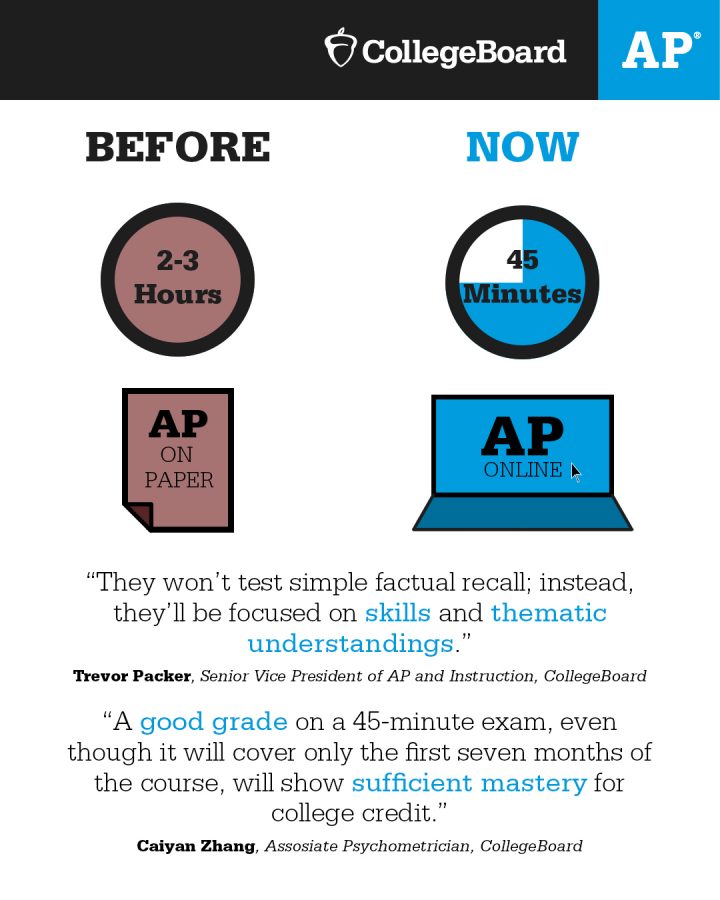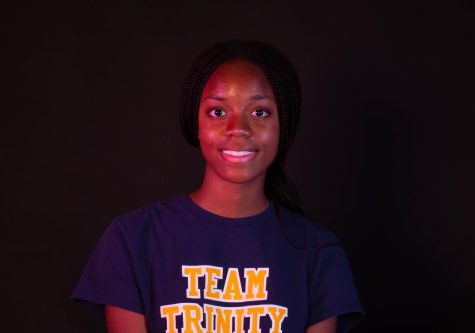Amidst the coronavirus outbreak, the College Board has announced that the exams will be taken online, at home and will only last 45 minutes instead of the usual two to three hours. The shorter exams have had students and teachers finding new outlets for review and opened up new challenges, as well.
To mitigate stress, the College Board has included online review classes on its Youtube channel Advanced Placement. Students like Aleyna Buyukaksakal are using other resources to study with as well.
“I have watched some of the AP Classroom videos on YouTube, and my teachers have also assigned some homework to review before the exam,” junior Aleyna Buyukaksakal said. “I also use Barron’s AP review books and practice tests and the new review site that Trinity has allowed for students called Albert.io.”
Many teachers have taken advantage of these resources and have also begun to review the course material.
“We covered the rhetorical analysis material extensively during the first semester, and we have plenty of time to fine-tune their skills,” said English teacher Dr. Robert Boerth, who teaches AP English Language. “We will be doing concentrated work preparing for the type of essay prompt that is the focus of the exam.”
Each AP exam will be open-book and note and will consist of free-response questions. The more common AP classes, AP English and History courses will focus more on Free Response Questions (FRQ), Document-Based Questions (DBQs), and essays.
“I’m just going to practice DBQs and review everything that we’ve been studying all year,” sophomore Ayla Saaed said.
The science AP’s will focus on skill building, evaluating experimental scenarios, and environmental concepts. Despite the immense amount of resources, many students must learn and cope with different strategies.
“As the exams will be open note and only 45 minutes, the students won’t be able to search up every single question but will be able to check the ones they are unsure of,” said Science Teacher Emily Massey-Burmeister, who teaches AP Environmental Science. “Not having a multiple-choice section puts the students at a disadvantage as they have a lower chance of getting the answer correct.”
Depending on the course, the multiple-choice section usually comprises 45% of the exam grade. Over the years, the College Board has tried to reduce the amount of multiple-choice questions. By asking many multiple-choice questions, test creators are able to more fully assess a student’s knowledge and make the chance of mistakes less costly.
“[Multiple choice] is quick, for one thing, testing students on a wide range of material in a short period of time,” said Robert Schaeffer, Public Education Director of FairTest, the National Center for Fair & Open Testing.
Some College Board officials don’t believe that a lack of multiple choice questions will show that the students have fully grasped the content.
“Free-response questions measure a student’s knowledge in more depth, which is a good thing,” said Wayne Camara, the College Board’s vice president of research. “But if a student glosses over a topic while studying and that topic shows up on an essay question, they can be out of luck, even if they know a large percentage of the course material.”
However, this outbreak has forced a reassessment of the need for longer multiple choice and free-response sections.
Some students such as Buyukaksakal are satisfied with the change in AP format.
“I think that the new 45-minute AP testing time is adequate since we are taking at-home tests,” Buyukaksakal said. “If we had more time and more material, there would be a greater possibility of error when uploading and most likely greater instances of cheating.”
Other students such as Saaed are skeptical of the new AP format.
“I think they’ll be hard because we’re not in school but not too hard because we’ve been preparing all year,” Saaed said.















